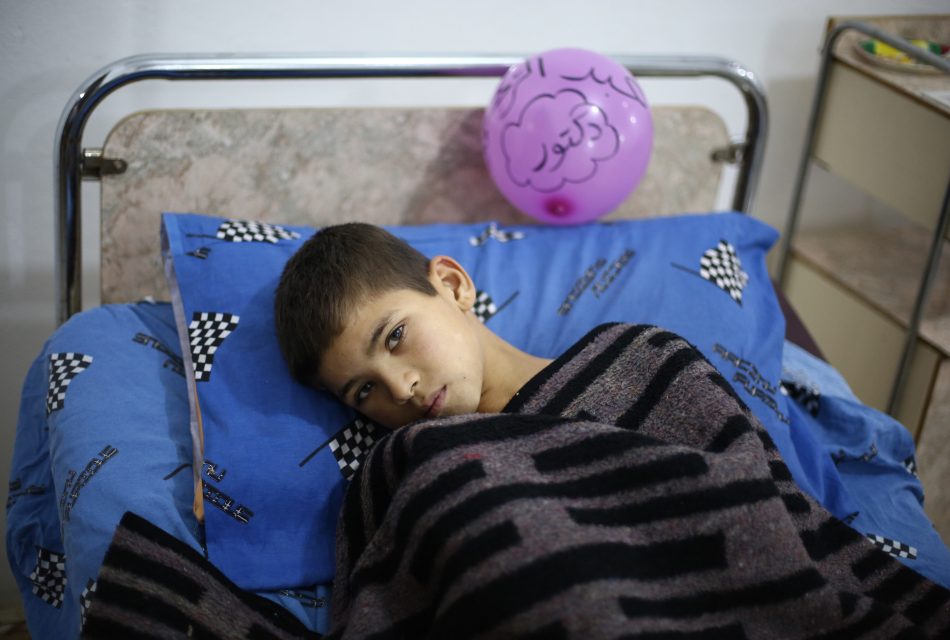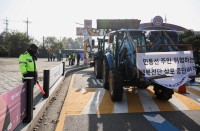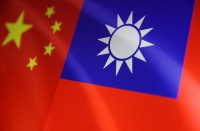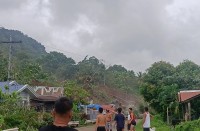
by Hassan Mohammed
Agence France-Presse
KAFR BATNA, Syria (AFP) – Dozens of trucks carrying aid for 40,000 people on Monday entered the besieged rebel-held Eastern Ghouta area near Damascus, where residents and relief groups have warned a humanitarian crisis is escalating.
Shocking AFP images from the region this month showed severely underweight children, and doctors reported two infants had died of malnutrition and related complications.
The United Nations and the Syrian Arab Red Crescent (SARC) said a joint aid convoy had entered Eastern Ghouta on Monday, carrying food and medical supplies.
“We entered Eastern Ghouta… we are planning on delivering aid to Kafr Batna and Saqba today for 40,000 (people),” said Linda Tom, spokeswoman for the UN’s humanitarian coordination agency, OCHA.
Residents gathered at the entrance to Mesraba, a city in Eastern Ghouta, carrying signs to demand an end of the blockade of the region and pictures of one-month-old baby girl Sahar Dofdaa who died this month of starvation, an AFP reporter said.
“Sahar died of hunger before she could see you,” read one sign.
The joint UN-Syrian Arab Red Crescent convoy included 49 trucks carrying 8,000 food parcels and a similar number of bags of flour, medicine, medical supplies, and other nutritional materials, Red Crescent spokeswoman Mona Kurdi said.
The aid would be distributed across several districts including Hamouria, Ain Tarma, Kafr Batna and Saqba, SARC said.
In the town of Saqba, AFP saw aid workers get off the food trucks carrying bags of flour and boxes which they put in a warehouse.
Eastern Ghouta was once a prime agricultural region famed for its orchards.
But the rebel stronghold has been under a tight government siege since 2013, causing shortages of food and medicine.
That pushed up prices for whatever supplies could be produced locally or smuggled in.
‘End the siege’
A delegation accompanying the aid truck, including UN aid workers, visited a hospital in the town of Kafr Batna where some malnourished children are being treated.
A member of the delegation was seen measuring the arm of a child, while another child with a belly bloated from malnutrition was rushed in for treatment, an AFP reporter said.
Mothers whose children are receiving care at the hospital surrounded the aid delegation, calling for an end to the siege.
“We don’t want food, we want a lifting of the siege,” one of them said.
Doctor Amani Ballur, a paediatrician at the hospital, said she briefed the delegation on the situation of malnutrition gripping her region.
“We made our voice heard,” she said.
“We need the road to reopen and food to enter normally so that Ghouta residents and children live normally,” she said, adding that some of those hospitalised in Kafr Batna needed to be evacuated.
The region has been devastated by years of fighting, with government air strikes and shelling bringing down multi-storey buildings and rendering whole streets uninhabitable.
Basic services for the region’s estimated 400,000 residents are virtually non-existent, with electricity produced only by generators and the available water often dirty and a vector for disease.
Aid has entered the area only sporadically, and convoys have generally only been able to deliver food and medical supplies that fall far short of the region’s needs.
‘Tragic proportions’
Until Monday, just two convoys had entered Eastern Ghouta since August, carrying supplies for fewer than 100,000 people.
Aid can only enter the area with permission from Damascus, which has often proved difficult to secure.
That has continued to be the case despite the implementation in July of a “de-escalation zone” agreed by rebel backer Turkey and government allies Russia and Iran.
The agreement has reduced violence in the area, but there has been a little uptick in aid deliveries.
Last week, the International Committee of the Red Cross warned that humanitarian needs in Eastern Ghouta were “huge” and that the “situation is getting worse.”
“We know from past experience that such situations, where the population depends on the provision of humanitarian aid for its very basic needs, can deteriorate very quickly, and reach tragic proportions,” said ICRC spokeswoman Ingy Sedky.
The UN said last week that over 1,000 children in Eastern Ghouta were suffering malnutrition, and medics in the region reported that at least two have died from malnutrition or its complications in October.
One of them was 34-day-old Sahar, whose emaciated form, swamped by her diaper, appeared in AFP images published earlier this month.
She weighed less than two kilos (just over four pounds) before she died on October 22 at a hospital in Hamouria (Agence France-Presse).








